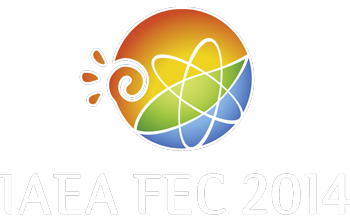Speaker
Mr
Alexander Livshits
(Bonch-Bruevich University)
Description
Due to severe limitations on the content of He in the plasma, the exhaust of nuclear fusion reactor will mainly consist of unburned fuel, including expensive and radioactive tritium. If all this exhaust mixture is directed to the tritium plant for its separation from helium and other impurities (as planned in ITER), this leads to a significant tritium inventory in the vacuum pumps and processing systems.
To reduce the cost and improve the safety of nuclear fusion power plant it would be desirable to separate the major portion of D/T mixture from He in the immediate vicinity of the divertor output, compress it there and direct it back into the plasma by the shortest way passing the tritium plant.
The membranes superpermeable to suprathermal hydrogen particles can be applied for the realization of such “short way separation” scheme in future fusion machines and first of all in DEMO. Suprathermal hydrogen particles whose energy (kinetic, chemical or internal) exceeds ≈1 eV are able to pass through the superpermeable membrane (SPM) almost like an opening of the same area. SPM separates the permeating hydrogen from any impurities including He as well as automatically compresses it by orders of magnitude.
The combination of SPM with the plasma generation of suprathermal hydrogen appears to be most suitable technical solution. It would be reasonable to start the experiments with SPM coupled with plasma in favor of post-ITER devices including DEMO. Such experiments must be mainly purposed for modeling, testing and optimization of possible arrangements for the short way refueling in fusion machines.
| Country or International Organisation | Russian Federation |
|---|---|
| Paper Number | PD/P4-1 |
Author
Mr
Alexander Livshits
(Bonch-Bruevich University)
Co-author
Prof.
Arcadii Yukhimchuk
(All-Russia Research Institute of Experimental Physics, 607190, Sarov, Russia)

